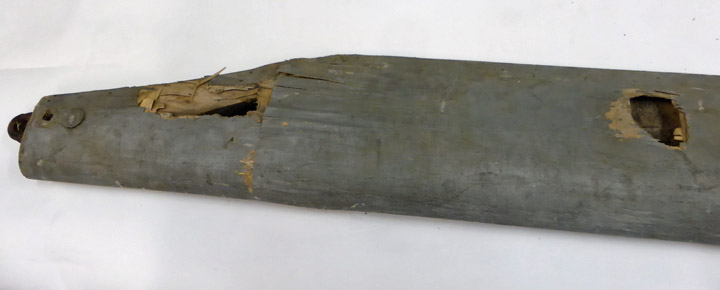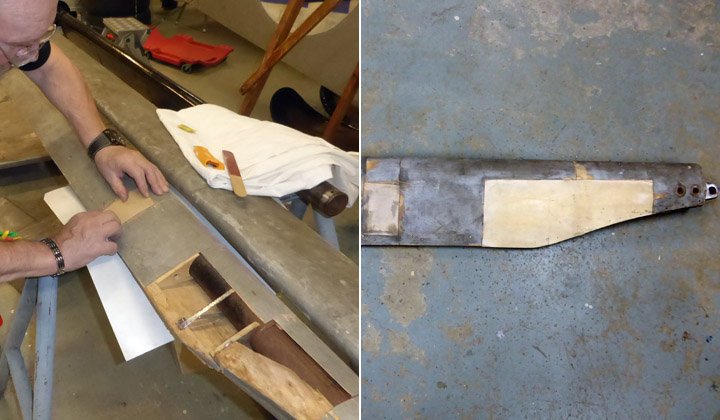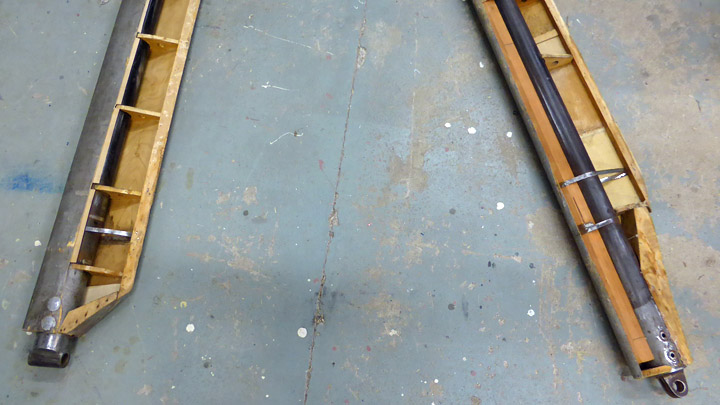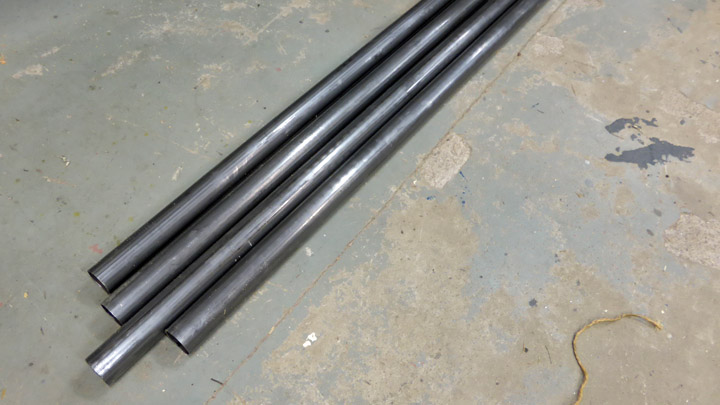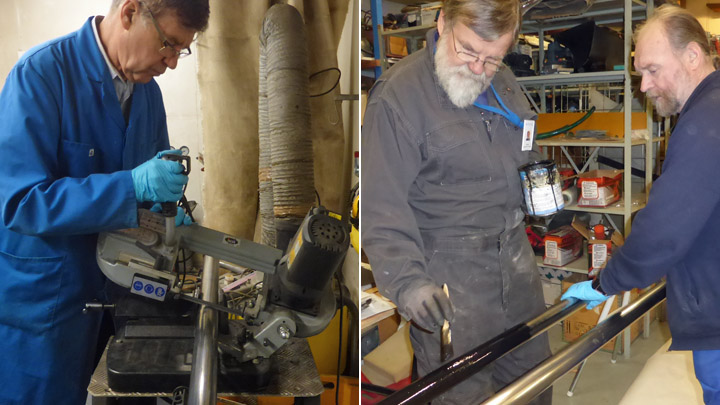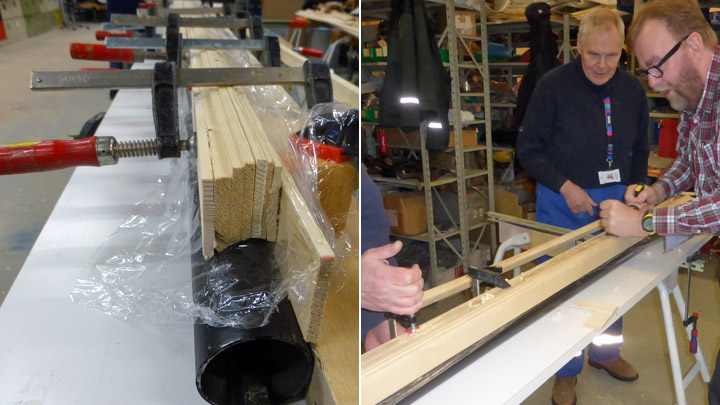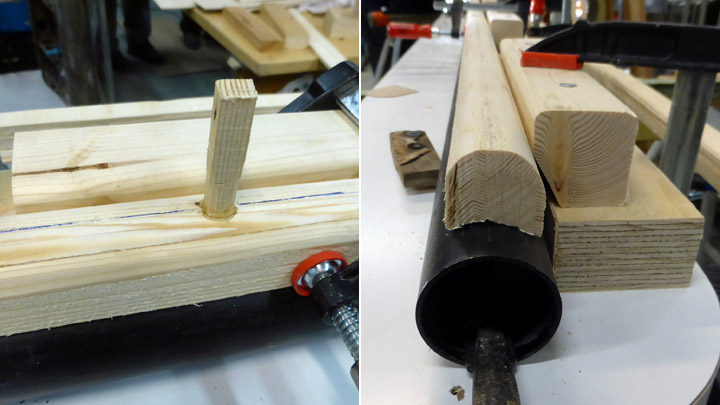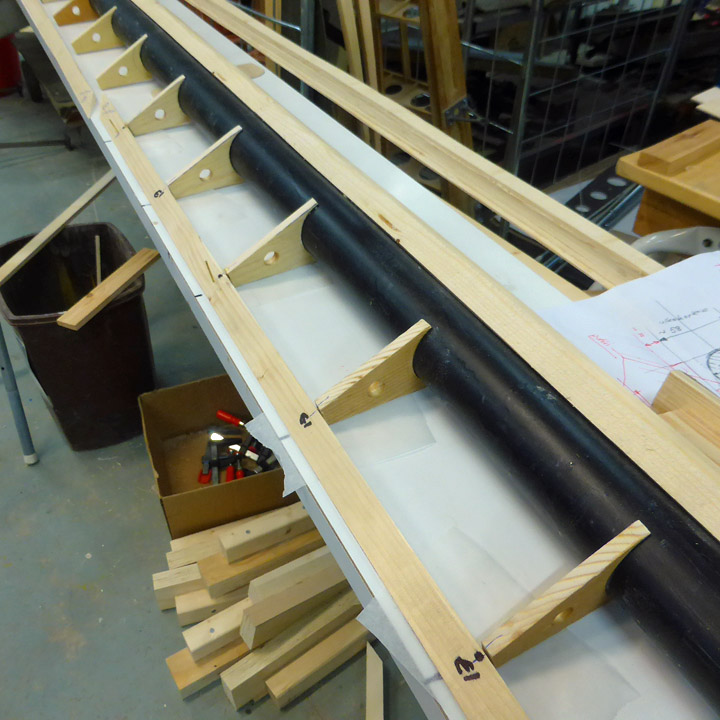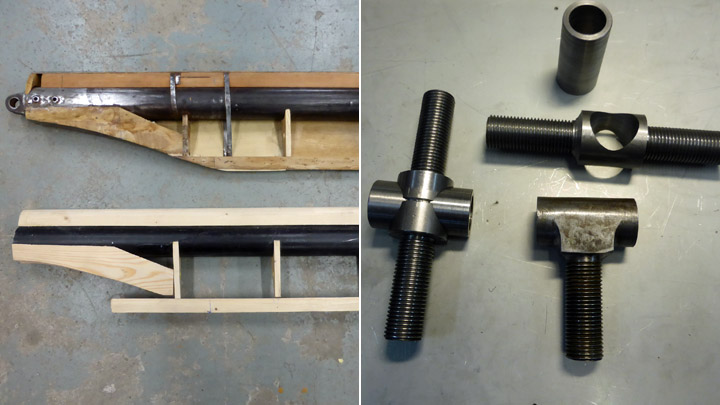Repairing old and building new wing-struts for KurkiMaanantai 27.2.2017 - Member of Tuesday Club Two of the total of six wing-struts for the I.V.L. K.1 Kurki were found at the Päijänne-Tavastia Aviation Museum at Vesivehmaa. The found struts were the front- and the (diagonal) mid-struts. The struts were damaged, but repairable. However, a total of six struts are needed for the Kurki, three on each side, so four more have to be made. The existing struts will be used as templates for the new ones. As we have no models and no drawings of the Kurki have survived, we have assumed that they are similar in construction to the front-struts.
The two found wing-struts were damaged. Their plywood coverings had holes in them and they were partly rotted. The rotted parts must be replaced, and the holes must be mended. The rotted parts will be removed all the way to good plywood and new plywood will be put in in its place. Fixing the holes is underway in the well-proved Tuesday-Club manner – a square or rectangle is drawn around the hole and the cut is made in the plywood along the lines, the cut-out faulty piece is removed and replaced with a new piece of fresh plywood.
Having to remove the rotten wing-strut covering plywood was actually a blessing in disguise. Doing this, revealed the inner construction of the wing-strut. Thus we got the knowledge on how to make the missing struts. Removing the rotten covering plywood revealed that the main load-carrying part of the strut was a steel tube with an outer diameter of 52 mm. Attached to this was the solid-wood leading edge of the strut and the plywood-covered wooden ribs and the wooden trailing edge giving the strut its aerodynamic form. At both ends of the struts there were wooden support structures and a metal lug at each end for fastening the strut to the fuselage and the wing.
With the existing struts as models plans for the making of the four missing struts and a list of materials needed were made. As we were unable to source any steel-tube with the right diameter we had to settle for a 50.5 mm one. This was considered close enough for the purpose. Finding the necessary wood-materials for the making of the leading- and trailing edges was a piece of cake.
We started making the new wing-struts from the 3 m long steel tubes. The tubes were cleaned of their protecting grease and cut to measure. The tube for the front- and rear struts is 262 cm long and that for the mid-strut 273 cm. After being cut to measure the tubes were painted using black Isotrol varnish.
We decided to start by making the other middle strut. First the tube was firmly fastened to the purpose-built work-foundation. For the making of the wooden leading-edge we first cut 0.5 cm thick strips out of a piece of wood the length of the tube. These were glued together pushed against the tube, giving the back part roughly the shape of the tube and a rough leading-edge that was then planed and sanded to shape of the original leading edge.
The finished leading-edge was then fastened to the tube using four countersunk screws, with their heads sunk deeply into the leading-edge, after which the holes were plugged using wooden plugs. Thus the leading-edge was finished and it was time to tackle the trailing-edge.
From the original wing-struts we got the models for the trailing-edge ribs, of which we made some dozens to start with, and then we varnished the sides of the ribs. A strut will take 14-16 ribs. The needed ribs were fitted into place and glued to the tube using epoxy-adhesive – yes, we know epoxy was not used in the 1920’ies but… Then we made the wooden trailing-edge and glued it into place using epoxy-adhesive. Now the main parts of the wing-strut were done.
It was still lacking the solid-wood support-structures at each end as well as the metal fastening lugs. These are now being made in our workshop. We decided to make all the missing wing-struts up to this stage, before continuing with the finishing work and covering of them all. Work on the missing front wing-strut is already ongoing. |
|
Avainsanat: aviation history, restoring, old aircraft, I.V.L. K.1 Kurki |


